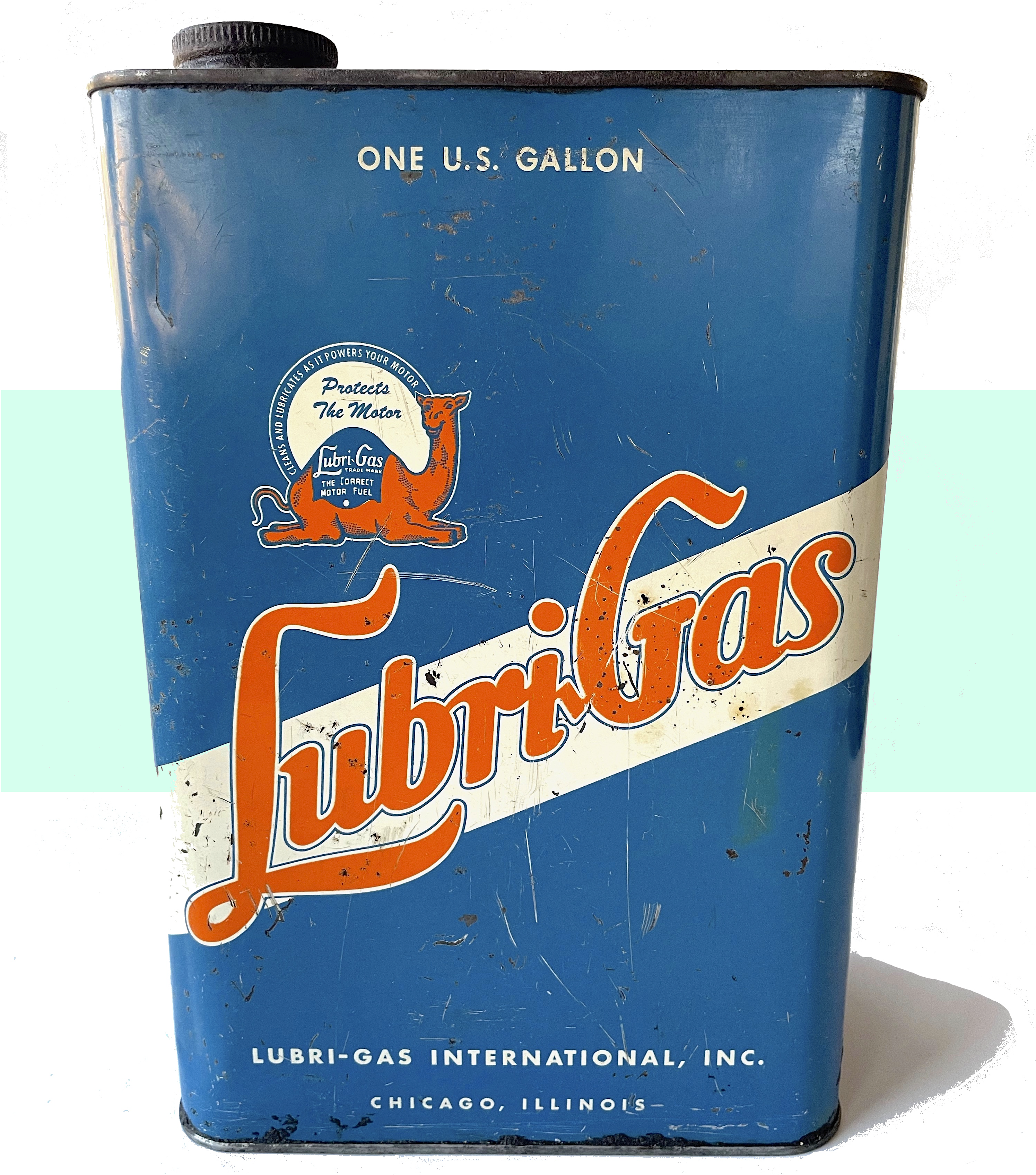
Museum Artifact: Lubri-Gas 1 Gallon Can, c. 1950s
Made By: Lubri-Gas International, Inc., 221 N. LaSalle St., Chicago, IL [Downtown / The Loop]
Research is underway on this one and a full write-up will be coming soon.

Museum Artifact: Lubri-Gas 1 Gallon Can, c. 1950s
Made By: Lubri-Gas International, Inc., 221 N. LaSalle St., Chicago, IL [Downtown / The Loop]
Research is underway on this one and a full write-up will be coming soon.
This is Tina Grostefon. My grandmother’s name was Juna Paden (Butts was her married name) but she was called by family June and Junie. Please provide your phone number and I would be happy to provide further details. There is a great deal to share.
Tina Grostefon, what was your grandmother’s name? Charles E. Paden’s middle name was Edker. I’m doing a biographical sketch for his grandson and would love to know if we are talking about the same person. Charles Edker Paden was a major scam artist and Lubi-Gas was his classic scam.
My name is Tina Grostefon and my grandmother was Ed Paden’s sister. I was told by my grandmother and other family members that Ed started Lubri gas. I have pictures and letter head from Lubri Gas written by Ed Paden. There is another part of the story prior to him leaving the south and heading to Chicago which could be why you have the name Charles Paden. I would love to talk more.
This product was developed and sold by a Gentleman named Charles Paden in 1917. Charles Paden was described to me as a WC Fields likeness. He was a great salesman. He once held a meeting in Detroit in July and invited 100 fleet owners. He took the entire coolant system (radiator and Fan) off a Ford car with a flat head 6-cylinder engine and drove it from Chicago to the fleet owner meeting in Detroit. He called it the Camel Car “runs without water”. Charles pulled in with the camel car shortly after dinner and asked all the Fleet owners to come outside and view the Camel Car that “runs without water” only Gasoline with Lubri-Gas treatment. He received numerous orders that night. Charles Paden was a great customer entertainer and a big big drinker. During his reign he was very successful, considered affluent, bought a big Mansion on LakeShore Drive that was known as the Lubri-Gas mansion. He also got himself into a lot of trouble. He did not believe in Income tax and that landed him in jail. He was publicly outspoken and that landed him i Jail. Within the 1920-1940’s Lubri-Gas was distributed through privately owned Gas Stations (Mom & Pop gas stations) throughout the USA as the 3rd pump Premium Lubri-Gas. Over 100 Gas Stations. The product was also sold to many trucking fleets, municipalities and School districts. For years the California Rapid Transit District (LA City Busses), many railroads and the US Navy used Lubri-Gas. Lubri-Gas was involved in the Marshall Plan and sold throughout Europe. After WWII, the larger oil companies pushed the privately owned Gas Stations out of the market and used their own brand, with that, Lubri-Gas and Charles Paden continued to sell direct and through distribution to fleet customers. When Charles Paden passed, he handed the company to his son Keith Paden. Keith continued to successfully run Lubri-Gas with very little marketing until the Mid 70’s when there was an oil crunch, and he could not get raw material supply. The company was then sold to Frank Van de Putte, a Distributor of Lubri-Gas out of Detroit Michigan. Lubri-Gas and its assets then moved from Evanston IL to Detroit Michigan.